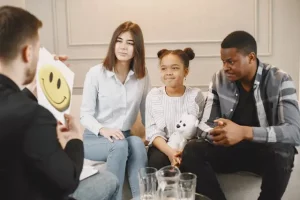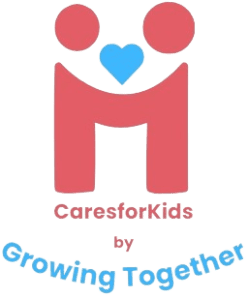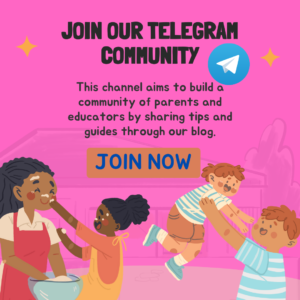What To Do When Your Child Is Constantly Distracted: Understanding Inattentive ADHD
The article is developed in partnership with BetterHelp.
Have you ever asked your kid to get dressed for school, only to discover 20 minutes later that they’re still in pajamas and playing with their toys? Or have you sat with your child while they’re supposed to be working on homework, only for them to focus all their attention on sharpening their pencil?
Most parents encounter the challenge of highly distractable kids from time-to-time. You can use enrichment activities to help keep your kids engaged, but at some point, they’ll have to sit quietly and work on potentially less-interesting things, like homework or cleaning their room.
This article helps you develop a greater understanding of your child’s experience, as well as tools to help your children learn skills like organization, time-management, and selective focusing.
Why kids get distracted


It’s very common for children to get distracted, and there are many reasons for this, including:
- Boredom
- Tasks are too easy or too hard
- Executive function skills are not yet fully developed
- Age-appropriate challenges like impulsivity, reduced ability to sustain attention, and motor control
- Navigating a transition, like going to a new school, moving, or their parents are getting a divorce
- They’re excited about something, like a birthday party, summer break, or a new toy
- There’s something stressful happening, like the death of a loved one
- They have a learning disability or ADHD
- They have a physical or mental health challenge, like anxiety or an autoimmune disorder
In many cases, getting distracted is not a cause for concern. But, when your child gets distracted very easily, there are multiple types of challenges that could be present. If your child is having significant difficulties with distractions, memory, or hyperfocus, it may be a good idea to read up on inattentive ADHD, which is much less well-known than hyperactive ADHD, at BetterHelp.
How to respond when your child is having trouble paying attention
If your child has difficulty paying attention, they may have experienced teachers calling them “bad” or punishments like time-outs or grounding. However, these responses are likely to make it harder for children to grow, and it can be damaging for their mental health and self-image. By adopting a positive outlook instead of a negative one, you can help your child build a growth-mindset and can-do attitude. The following advice may help you understand and better communicate with your child:
Understand that the ability to focus is a learned skill
It’s common to feel frustrated when your child won’t sit still and focus. However, constantly reminding your child to pay attention or concentrate can be damaging for their self-esteem. Setting goals, paying attention, and working on the task at hand are all executive function skills that take time and patience to develop.
Children who struggle with executive function aren’t distracted on purpose. So, instead of telling them to change, which may cause them to become frustrated or break down, it can be more beneficial to give them the tools to better manage their time and learn how to focus.
Ensure children are aware of their challenges
Once you understand your child’s challenges with paying attention, it’s a good idea to share with them. Explain that many children have challenges regulating their attention, but by using helpful strategies and working hard, they can overcome these issues and grow even stronger because of them.
You may also want to explain what executive functioning is, what it means to focus, and why the ability to focus is important. It’s also important to remind child with these challenges of their strengths, such as:
- Increased creativity
- Spontaneity
- Energetic
- The ability to think outside the box
- The opportunity to understand themselves better
- By overcoming challenges, they can become more resilient and self-confidence
It’s important that your child understands that their distraction means they have difficulties regulating their attention. This can make it more challenging in environments where they’re asked to sit still, concentrate, and listen quietly for much of the day. But that doesn’t mean they’re a bad kid or that it’s their fault that they have challenges with certain things.
Explain ADHD
If ADHD is responsible for your child’s difficulties with attention, you can explain their diagnosis using age-appropriate language. The organization, Children and Adults with Attention-Deficit/Hyperactivity Disorder (CHADD), gives the following definition: “ADHD means your brain enjoys things that are new and exciting, but it may be harder to learn things you have to repeat a lot, like math facts.”
Communicate your desire to help
Meet your child where they’re at. Let them know that you understand or want to understand their experience, and that you are there to help them make it easier to navigate. For example, if your child often complains that their classmates distract them, you might say, “You were saying that you’re getting distracted by your classmates at school this week, right? Let’s think of some ways that we could address that challenge.”
Children with executive function challenges often internalize guilt or shame about their difficulty focusing. Supporting them, instead of criticizing them, is important for developing a growth mindset.
Helping your child when they have difficulties with executive function
The following are some specific tools and strategies you can use to help your child improve their attention regulation:
Develop SMART goals
SMART goals are specific, measurable, attainable, relevant, and time-based. These structured goals can help people set achievable goals in the short and long-term. For example, a smart goal to improve organization skills may sound like, “Every evening this week, I will prepare a five-item to-do list for the following day.”
Reduce distractions
Reducing distractions can help children focus. For example, you should consider turning off phone notifications, turning off the television, and discussing whether blocking social media applications during schoolwork hours could be beneficial.
Invest in a planner
Physical planners and Google Calendars can help children who have difficulty staying organized or remembering things. Work with them to color-code activities, like using blue for homework, using orange for extracurricular activities, and using green for chores.
Help them organize their space
Children who are easily distracted often find it difficult to keep things organized. To help make it easier for them to keep their room tidy, consider the following tips suggested by a professional organizer whose child has ADHD:
- Work together to decide where things should go, and then create labels together to help keep things organized.
- Put each category of item in its own container. For example, put socks in one container, pajamas in a different container, and underwear in yet another.
- Declutter and donate unused items.
- Color code things like clothing, books, and toys.
- Use clear bins when possible.
- Use closet space, room dividers, and other tools effectively to reduce distractions.
- Store out-of-season shoes and clothing in another room.
- Create “zones” like a study zone, sleep zone, play zone, and art project zone.
By involving your child in the process and inviting them to problem-solve with you, you can help them build their self-esteem, exercise creativity, and create a space that they’re proud of.
Help them create a strategy for the classroom
By choosing a seat in the front of the classroom and away from things like windows or noisy peers, kids can reduce the likelihood of encountering distractions. You should also inquire with your school about accommodations, like noise-cancelling headphones or earbuds, which can reduce distractions during quiet time and tests.
Try time-management techniques
Time-management strategies, like the Pomodoro Technique, can help kids break up their time into “focus time” and “break time.” Try the Pomodoro Technique with your child:
- Help your child pick a single task to focus on and then find a quiet space away from distractions like phones, pets, and siblings.
- Set a timer for 15-30 minutes. When the timer goes off, your child has completed one Pomodoro.
- Take a five-10-minute break after each Pomodoro.
- Repeat for a total of four Pomodoro’s.
- After four Pomodoro’s, take a longer break (20-30 minutes).
The Pomodoro Technique is a great tool for kids who procrastinate or struggle to start tasks. The short, focused work intervals remind them they won’t be stuck working forever, making it easier to get started.
Consider tracking Pomodoro’s each day and celebrating when your child hits milestones. For example, maybe the family goes out for ice cream when your child reaches 50 total Pomodoro sessions.
Introduce one thing at a time
It can be tempting to try making a bunch of changes all at once in the hopes of helping your child. However, introducing changes slowly can reduce the likelihood that you will overwhelm your child or cause them to shut down or give up. Remember that developing executive function skills is a marathon, not a sprint.
Takeaway
Many children get distracted, and although it can be frustrating for adults to navigate, it’s important to avoid the urge to reprimand them for it. When children are given the tools and opportunities to learn skills like organization, time management, and attention regulation, they can become more attentive listeners and build confidence in their ability to set and achieve their goals.







